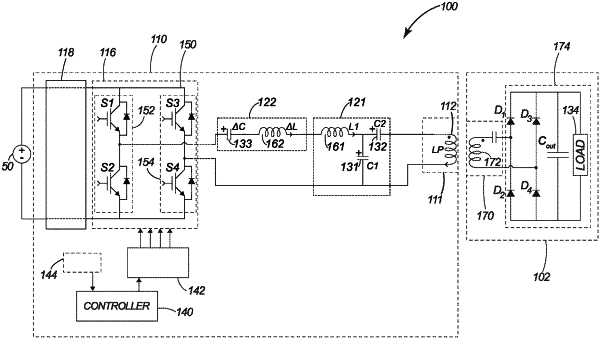| CPC H02J 50/12 (2016.02) [B60L 53/122 (2019.02); H02J 50/40 (2016.02); H02J 2310/48 (2020.01)] | 17 Claims |

|
1. A wireless power transfer (WPT) system for wirelessly providing high-frequency AC power to an electric vehicle (EV) or a plug-in electric vehicle (PEV), the system comprising:
an off-board transmitter including:
an inverter having an output;
a transmitter coil configured to wirelessly transmit the high-frequency AC power; and
a resonant tuning network comprising first circuitry coupled to the transmitter coil and second circuitry coupled between the output of the inverter and the first circuitry;
wherein the first circuitry includes:
a first inductor and a first capacitor connected in series to the transmitter coil, and
a second capacitor connected in parallel to the first capacitor and the transmitter coil;
wherein the second circuitry is configured to cause inductive operation of the inverter at a switching frequency of the inverter that corresponds to a power factor in a range 0.80 to 0.99;
wherein the second circuitry includes:
a second inductor connected in series to the first inductor of the first circuitry, and
a second capacitor connected in series to the second inductor, and
wherein inductance of the second inductor and capacitance of the second capacitor are configured to cause the second circuitry to
resonate at the switching frequency of the inverter,
establish zero voltage switching operation for the inverter at a switching frequency of the inverter, and
mitigate current harmonics of the inverter.
|